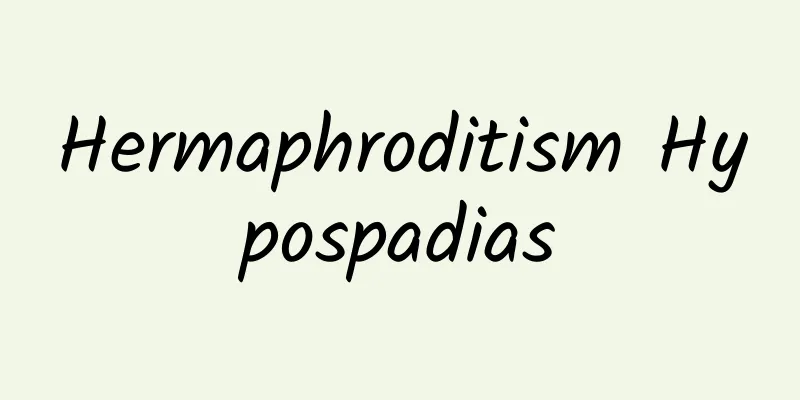Can bone setting cure lumbar disc herniation?

|
Bone setting is a relatively traditional Chinese medicine treatment method. It can also be used for patients with lumbar disc herniation. It can relieve pain and promote blood circulation. Of course, this method is also relatively conservative and requires professional doctors to have relatively advanced skills. Because if the bone setting is not done properly, it may worsen the patient's condition. If you have lumbar disc herniation, you must receive regular treatment. Treatment of lumbar disc herniation 1. Conservative treatment: 1. Absolute bed rest: The simplest treatment for acute low back pain is absolute bed rest. The word "absolute" emphasizes that you should not get out of bed or sit up for urination or defecation, so as to achieve good results. After 3 weeks of bed rest, wear a waist belt and get up and move around. Do not bend over or hold objects for 3 months. Research by foreign scholars has also shown that absolute bed rest for 2 days can achieve better results than long-term bed rest. 2. Continuous traction: Pelvic traction can slightly widen the intervertebral space, reduce the intra-disc pressure, and expand the capacity of the spinal canal, thereby reducing stimulation or compression of the nerve roots. It is contraindicated for pregnant women, patients with hypertension and heart disease. 3. Physical therapy, manipulation and massage: can relax spasmodic muscles and further reduce the pressure on the intervertebral disc. However, violent manipulation and massage should be prohibited. 4. Non-steroidal anti-inflammatory drugs: can reduce local edema, thereby reducing pressure on nerve roots and spinal cord. 5. Epidural hormone therapy: Epidural injection of long-acting hormones combined with anesthetics is a good method for symptomatic treatment of disc-related and other types of low back and leg pain. We recommend that this operation should be performed in a room with resuscitation and monitoring equipment and performed by an experienced anesthesiologist. This method can be used on an outpatient basis, but the patient must be prepared for several hours of recovery time. 6. Chemical nucleus pulposus dissolution therapy: Use papain or collagenase to inject into the intervertebral space to dissolve the degenerated nucleus pulposus of the intervertebral disc. It can save 3/4 of patients with surgical indications from surgery and be cured. However, there are strict indications and contraindications, and it requires an experienced doctor to perform. 7. Traditional Chinese Medicine: It can be applied externally to promote blood circulation, remove blood stasis, relax muscles and tendons, and relieve inflammation and pain, thereby achieving the goal of treating both the symptoms and the root cause of lumbar disc herniation. During the treatment period, you should avoid strenuous exercise, sitting for long periods of time, and not putting sudden force on your waist. (ii) Surgical treatment: 1. Posterior discectomy: Surgical treatment of lumbar disc herniation, the posterior approach is the commonly used method. There are methods such as full lamina resection, half lamina resection and partial lamina resection (i.e. fenestration). Since the first two methods involve more resection of stable lumbar structures, they are only used in a few cases. Usually, the treatment goal can be achieved by opening the lamina. 2. Anterior extraperitoneal discectomy: The anterior and lateral parts of the intervertebral disc are more clearly exposed during anterior extraperitoneal discectomy. Two adjacent intervertebral discs can be removed at the same time, and it is beneficial for anterior bone grafting and fusion in patients with combined lower back instability. 3. endoscopic discectomy: With the development of microsurgery, endoscopic discectomy can be used to perform discectomy through a small incision. The advantages are: less damage and faster recovery; gentle manipulation of the dura mater and nerve roots; better differentiation of anatomical structures and reduced operational damage. 4. Percutaneous lumbar discectomy: Percutaneous discectomy is a new technology that has been developed in clinical practice in recent years. Its biggest advantage is that the nucleus pulposus of the intervertebral disc can be removed by percutaneous puncture. The surgical trauma is very small and the operation can be performed faster by those with more skilled techniques. But it requires certain equipment and has high technical requirements. The surgical success rate reported abroad is between 70% and 90%. Some authors report that many cases still have symptoms of lower back pain after surgery, so the indications should be strictly controlled when applying it. |
<<: Can massage reduce lumbar disc herniation?
>>: Can I bend over if I have a herniated disc?
Recommend
What to do if you are afraid of not being able to sleep at night?
In real life, most people are prone to feeling af...
What to do if you have a full moon face
The main feature of full moon face is that the fa...
What to do if triglycerides are too high? Try this
Patients with high triglycerides should not eat g...
Symptoms of mung bean poisoning
It feels wonderful to drink a bowl of iced mung b...
What is the cause of the swelling and pain next to the toenail?
If there is swelling, pain and pustules next to t...
Medicinal uses of black dates
Black dates are a kind of food that many people l...
What are the common diseases in neurosurgery?
Neurosurgery is a discipline based on surgery. It...
What should I prepare for a hot spring bath?
Nowadays, people pay attention to health care. In...
There are small bumps on the glans like prickly heat
Because the weather is very hot and the body swea...
Small uterine fibroids
Since the incidence of uterine fibroids among wom...
Methods of correcting vision
Vision is very important to our human body. If we...
Which acupoints are used for moxibustion to lose weight
If we want to lose weight, all we have to do is u...
What is missing for hair loss
Hair loss is a very common phenomenon. People los...
How to regulate qi stagnation and blood stasis and what Chinese patent medicine to take
Many female friends have the condition of Qi defi...
What to do if you have large pores on your forehead?
Large pores are particularly prone to acne, which...









